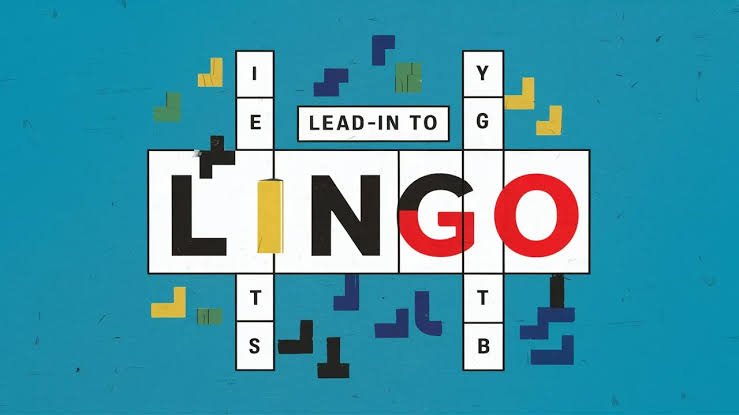Within the vast communication realm, the lead in to lingo is central to initiating meaningful interaction and understanding. Picture this: You stumble across an article or participate in a conversation with somebody who either entrances you or leaves you completely perplexed in the first few lines they say. This introduction, which often goes unnoticed, sets the tone of the entire discourse.
In this comprehensive guide, we unravel the intricacies of grasping lead in to lingo. We will explore core concepts to examine what makes for effective communication. From defining lead-in and understanding lingo to exploring their interdependence, each section has been carefully designed to arm you with the keys to handle language matters skillfully.
Are you set to unlock that gateway into compelling communication? Let’s get started!
Decoding the Introduction Lead in to Lingo
To avoid any ambiguities, I would be prudent to put forward a few words of introduction on what lead-in entails. In simple terms, the opening remark makes people become interested and compounded with the subsequent matters.
The nature of a lead-in will depend on various contexts. For written content, it could be an arresting headline, a leading question, or an interesting anecdote. As far as spoken language is concerned, this might include an icebreaker, a greeting, or an incisive statement. However diverse their forms may be, all these are aimed at the same thing: making sure that the audience’s minds are engaged in readiness for what comes next.
Investigating Communication: The Role Played by Lingo
Having understood what we mean when we refer to lead-in concepts earlier, let us now focus our attention on its alternative option, which is lingo. These terms stand for specific languages or vocabularies within particular fields or communities. They can also mean shorthand code words and diction used by insiders who work in coordination and conciseness.
Lingo becomes important to communication as it ensures clarity and precision among those who share common goals in their areas of expertise. It is instrumental in giving a sense of identity within community circles besides quick understanding and sharing of ideas, though not everyone understands those codes. Lingo can also be exclusive to outsiders who do not comprehend it well, thus emphasizing how inclusivity should be balanced against specialist knowledge.
The Meeting Point between Lead-In And Lingo
While exploring this matter further, we must acknowledge where the lead-in merges with lingo. At this point in the communication process, there has been a successful initiation into speaking using specialized vocabulary.
Effective communication requires catering to people new to something and those who have mastery over it. As such, newcomers’ introductions start from a foil provided by lead-ins, whereas insiders use jargon to promote dialogue.
The Significance of Mastering the Lead In to Lingo

Clarity lies at the core of effective communication. As a result, the lead-in accurately and purposefully guides readers/listeners through the maze of information. By crafting an enticing lead-in, you capture attention and set up a meaningful conversation.
The lead-in can be considered a map that outlines the path you will walk with your audience. By providing clear markers and directions, you reduce confusion and increase participation. Whether you share a personal story, ask a provocative question, or quote an astonishing fact, capturing interest and facilitating comprehension from the start is all that matters.
Establishing Authority: Leveraging Lingo for Credibility
Besides nurturing connections among people, entering into lingo also helps you gain authority or credibility in your specialization. When you incorporate technical jargon fluidly into your writing, you tell your target audience that you know what you are talking about and that they can trust you.
Lingo serves as shorthand for conveying expertise and insider knowledge to members of your community. By indicating fluency in professional language, one becomes established as an authority figure in one’s particular discipline or niche market. In this case, learning lingo is required to create credibility and influence, either when writing for a specialized audience or trying to establish thought leadership.
Driving Engagement: Captivating Your Audience from the Start
Moreover, perfecting the art of making introductions using technical words always improves passion and remembrance among people who listen to them. Today’s world is characterized by fast flow, and because attention is difficult to obtain, some important moments are lost during interaction, especially at the initial stages.
A well-done introduction captures attention until after reading/ listening to the message. From its inception until the end, it should be captivating through persuasive language features; storytelling methods combined with other interactive aids can thus engage people from the start.
In the next section, we will provide practical ideas on mastering leading to lingo, which will equip you with the skills required for better communication and effective connections with your audience.
Strategies for Mastery

Writing Strong Introductions
- Catch Their Attention: Start with a fascinating anecdote, query, or statistic to grab your readers’ instant.
- Set the Stage: Guide your audience by establishing the tone and direction of your communication from the beginning.
- Be Brief. Pack a punch. Avoid using unnecessary filler that can make your introduction weak and long-winded.
Polishing Your Lingo
- Understand Your Readership: Match your words to the target readership’s level of knowledge and interests.
- Finding a Balance: Use jargon sparingly, showcasing expertise without excluding newbies or casual visitors.
- Word Meanings: If you introduce any technical terms, provide a short description so everyone can understand what you mean.
Practicing Consistency
- Maintain One Voice: Make sure that there is uniformity in how you express yourself through tone, style, and language because this will help identify brand names by someone reading what you wrote.
- Repeat When Necessary: To enhance reception and reinforce the main point of communication, several key concepts or phrases should be repeated within the paragraph above, for example, the lingo used in law firms’ website content writing guidelines.
- Proofread for Errors or Inefficiency: Evaluate these lead-ins and lingo usage continuously based on feedback and performance metrics for optimization purposes.
When you apply these tactics, your opening to fluency will rise, which can create more robust links, gain trust, and improve interaction with your readers. Consequently, the next part will examine different case studies and other examples that can shed light on this issue.
Case Studies and Examples

This chapter will discuss some real-life scenarios and examples that illustrate how to master your lead into lingo in action. By considering successful applications in various contexts, we can draw lessons and inspiration for our own communication strategies.
Analyzing Successful Lead-Ins
Example 1: TED Talks
- Ted Talks has had a reputation for captivating audiences since its inception. They may commence with an exciting story, a thought-provoking question, or a strong statement that hooks the viewers and sets the stage for the presentation
- Considering popular Ted talk lead-ins allows us to discover common patterns and techniques that make them effective at capturing audience’s attention.
Example 2: News Headlines
- News outlets use lead-ins as headlines, designed to catch readers’ eyes and make them want to click on articles. Most of these headlines employ words which are either provocative or incite curiosity gaps or urgency with an intention of prompting engagement.
- Researching captivating news headlines reveals many tips for writing good ones especially when it comes to the beginning paragraph or introduction.
Deconstructing Effective Lingo Usage
Example 1: Tech Industry Jargon
- In technology industry, there is a lot of jargon which becomes accustomed because it is used as shortcuts for complicated theories and processes. This way, Apple or Google might weave lingo into their communication in such a manner that portrays their expertise and innovation.
- Examining lingo’s uses by tech giants such as Apple, Google etc via their marketing brochures or product descriptions can teach one how specialized language can create authority background among other things.
Example 2: Academic Discourse
- Lingo is important in academic circles too. In this domain scholars use discipline specific language which has precise meanings pertinent to their fields.
- Reading academic papers could give insights on how professionals strategically utilize jargon while still making themselves accessible enough even for non-experts.
Through analysis of these case studies, examples, we will learn useful hints and practical strategies on how we can master our lead-in through lingo when communicating. In the next section we are going to look at pitfalls when crafting lead-ins using lingo then we consider tactics of overcoming them.
Pitfalls to Avoid
Common Mistakes in Lead-In Creation
- Generalizers: Commencing with hackneyed and general phrases may not grab attention and differentiate your content from others. Avoid hackneyed expressions and aim to make your lead-ins original.
- Unclear Thoughts: Vague or complex sentences can baffle the audience, making it difficult for them to get the main idea. See that your opening sentence is straightforward on why you are communicating and what you want to say next.
- Inattentiveness to Audience Demands: Failure to think through audience preferences and their level of awareness can result in dull introductions. Be sensitive to your target audiences’ peculiarities in order to strike a chord with them.
Words Not To Use In Corporate Language
- Over Technical Expression: When dealing with highly specialized subjects, it is important not to use technical vocabularies that will alienate readers who are not familiar with them. Show expertise while keeping it simple at the same time.
- Jargon Overload: Too much reliance on industry-specific language can complicate communication instead of making it clearer. Only include language when necessary and give explanations or context when using special terms for the first time.
- Buzzword Abuse: Using modern buzzwords without proper context or significance can be hypocritical or dishonest. You should write meaningfully rather than trying too hard so as to appear sincere in speech.
By avoiding these traps and adopting strategies that negate them, you enhance your introduction’s efficiency as well as lingo application that build stronger ties between yourself and your interlocutors (Dijk). The final portion of this essay discusses tools available for improving writing skills further which, naturally, will assist a writer looking forward to advancing his/her communication techniques.
Tools and Resources for Improvement

Recommended Reading
- Books on Writing: There are different books on writing that can be read to understand more about the use and efficient deployment of leads into essays and effective language.
- Industry-Specific Literature: To get familiarized with the terms used in a particular industry, you can explore literature related to your area of interest.
Writing Tools
- Grammarly: Such software programs as Grammarly aid students in making their lead-ins more coherent, clearer, and grammatically correct.
- Thesaurus.com: Use Thesaurus.com to expand your choice of lexis in order to make your lead-ins different and creative in nature.
Online Courses and Workshops
- Coursera: Among such courses include Storytelling; Effective Blogging; Communication Skills among others. These will help one improve their style of making leads or lingo usage techniques.
- LinkedIn Learning: LinkedIn Learning provides tutorials from professional writers who have hands-on experience in diverse fields. Such workshops focus on writing styles that are job-specific for a given individual user’s selected areas of interest.
Writing Communities and Forums
- Reddit Writing Communities: This is an online platform where one interacts with other writers, shares their work or any tips concerning this matter like how they could make their leads better or even master lingo while writing essays and articles.
- Online Writing Forums: Online forums enable interested students to join various groups where they can engage in debates about what it takes to produce good write-ups or receive helpful advice regarding enhancing communication skills.
Continuous Practice and Feedback
- Journaling: Write regularly so as to experiment with those approaches utilized when constructing lead-ins as well as improving language selection especially when a person does not want too much pressure exerted on them.
- Peer Review: Share your lead-in paragraphs with other people whom you trust can give you valuable ideas about what you should change here so that your leads could be more engaging like by giving details would do at the end.
You can improve your lead-ins and master the art of lingo usage by practicing constantly and getting feedback using these tools. Thus it will enable you to speak with more conviction and enhance your connection with people.
Conclusion
We have travelled a long way in this guide to unravel the complexities of mastering the lead in to lingo. We’ve delved into what makes a great opening, using jargon and technical terminology, and how to blend accessibility with specialized knowledge. The lead in to lingo does much more than aid understanding or position one as an authority; it influences our engagements with others.
Therefore, be aware of the power of your lead in to lingo as you embark on your own communication journey. Think about how these principles can help you grip your audience, show that you know what you are talking about and form meaningful relationships whether through blogs, presentations or informal chats.
In order for your lead-ins in language usage to become better, keep learning continuously through practice and feedback from mentors and colleagues. May this guide unlock for you all the potentials of the lead in to lingo where deeper relationships will be formed, conversations started and impact made with every action you take.
Additional Resources
Continued Learning’s Relevant Articles and Other Materials
- The ‘Art of Writing Compelling Introductions’ by Sarah Johnson.
- Sarah Johnson, a renowned publisher and professional writer, shares her know-how about the creating the best beginning in an essay that can trap readers into examining further. It is an important article for authors who want to impress and attract their audience to read on.
- Mastering Industry Jargon: Strategies for Effective Communication” by Michael Smith.
- Michael Smith, a famous communication expert provides best ways of incorporating industry language in communication but still ensuring clarity and accessibility. All those professionals that would like to maneuver through difficult terminologies should read this article.
Community Forums and Discussions: Engaging with Fellow Writers
Remember also that as you continue learning how to lead into jargon, communication is both art and science; involving commitment; practice; and openness for change. May your expertise be enhanced with every introduction composed, word chosen, or relationship established such that you keep growing your talent pool towards spearheading any meaningful move in communication.
Dive Deeper Into Digital Culture: Explore More Articles on Our Homepage

